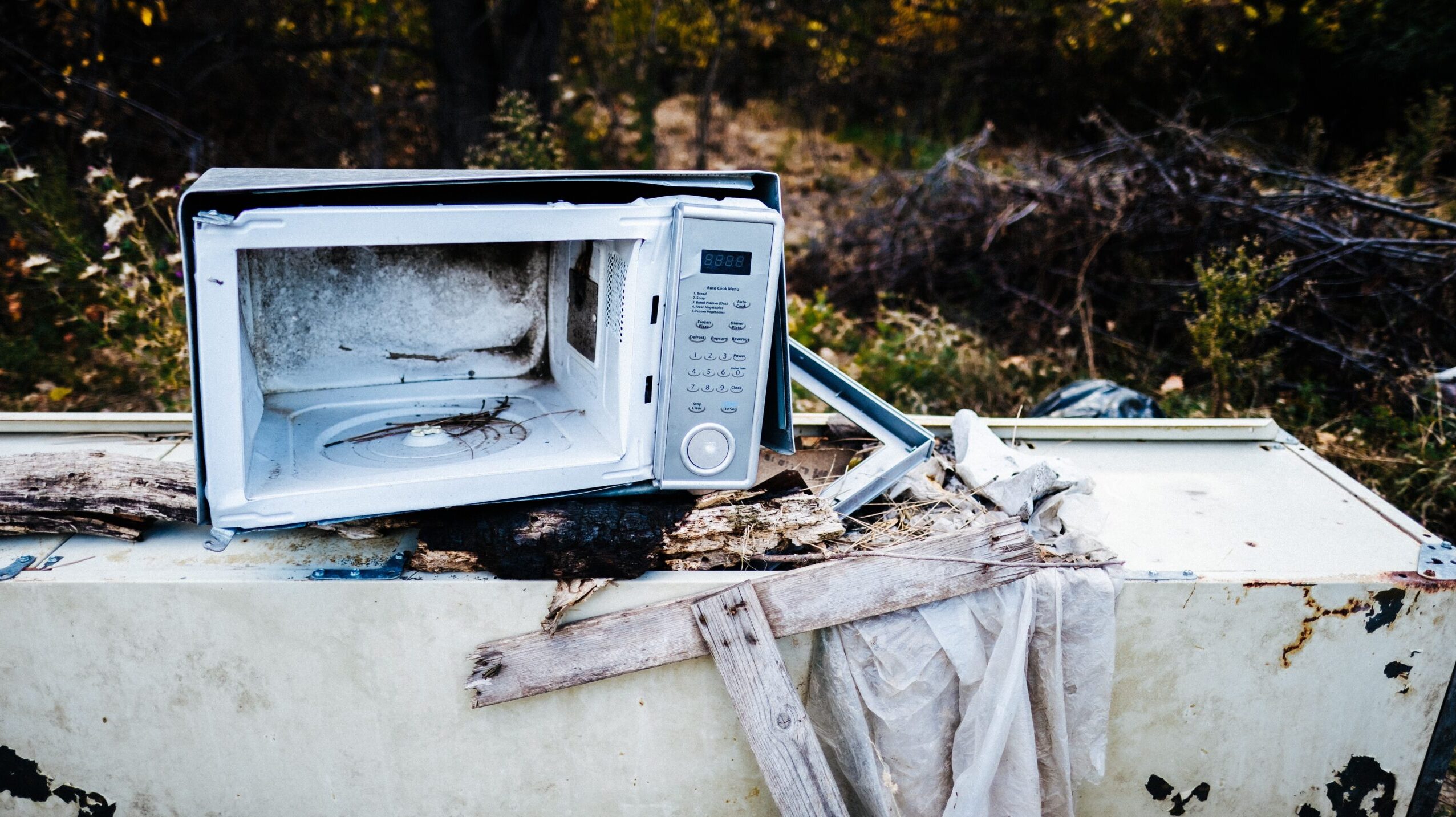
We all know that unforgettable mantra: “Reduce, Reuse, Recycle”. But in the case of household appliances, that triad isn’t enough. True Corporate Social Responsibility in the realm of small household appliances has to start before the beginning of the appliance’s functional life, not the end.
Electronic Waste Continues Breaking Records
Electronic waste, or e-waste, is a huge assault on global environmental health that only continues to grow. A record 53.6 million metric tonnes (Mt) was recorded in 2019 by the International Telecommunication Union (ITU).1
Small appliances like kettles, blenders, televisions, and toasters are necessary tools for many households. But what happens to that blender when the motor dies? Generally speaking, it doesn’t get repaired—it goes to the landfill.
This is for two reasons. First, often, small appliances cost little enough that it doesn’t make sense to invest in often costly repairs. If a toaster cost $30 and replacing a coil will cost $20, it’s understandable why many would opt to simply purchase a new toaster. The second reason is that appliance brands and manufacturers may purposely hinder attempts to repair or alter those appliances.
Sometimes, a manufacturer uses proprietary parts in a given appliance making spares difficult to procure. Further, some appliances are built in such a way that their mechanics are completely inaccessible without damaging the exterior. In both of these cases, there is little to be done.
Both of these decisions—selecting parts that lead to scarcity or designing a unit with internal inaccessibility—make an appliance more likely to obsolesce quickly. All of these challenges come together to create, well, a mountain of e-waste.
“Reduce, Reuse, Recycle” is Not Enough
It would be one thing if obsolesced small appliances could be meaningfully recycled and reabsorbed into the appliance supply chain. But this is not the case. According to the ITU’s Global E-waste Monitor 2020, there exists a value of over $57B USD in raw materials in e-waste.1 But, with an observed 17.4% recycling rate, only $10B USD of that value was recovered in 2019.1
This is only one metric which demonstrates the shortfalls of “Reduce, Reuse, Recycle”. It’s closely related to another worrying fact: so much unrecovered value suggests a lack of sufficient access to e-waste for processing which means many more harmful components are left to seep into the environment.
According to the ITU, “the increasing levels of e-waste, low collection rates, and non-environmentally sound disposal and treatment of this waste stream pose significant risks to the environment and to human health. A total of 50 t of mercury and 71 kt of BFR plastics are found in globally undocumented flows of e-waste annually, which is largely released into the environment and impacts the health of the exposed workers.”1
So, what is the problem with “Reduce, Reuse, Recycle”? Because small appliances are designed to obsolesce, we can’t reduce our e-waste by prolonging their lives. Similarly, in not being able to repair many small appliances, we can’t reuse them and current systems for processing e-waste means their components are not adequately recycled.
The Revolutionary Potential of a Circular Economy in Small Appliances
The solution to this mounting problem is the responsibility of both nations and corporations.
While in the USA and Canada, many provinces, territories, and states have legislation in place to manage e-waste, there should also be federal regulations in place, if only to properly monitor and gather data on the state of the e-waste problem. For example, the EU recently enacted the “right to repair,” which requires producers of household appliances to ensure products will last at least ten years.2
But for corporations, “Reduce, Reuse, Recycle” needs to be updated to fit into a new kind of supply chain: one shaped like a circle.
A circular economy is designed as a sustainable economy, where waste is used to create new products. In a perfectly circular economy, there would be no waste—the “offcuts” of any given industry could be used by another.
But in the realm of Corporate Social Responsibility, there are steps to be taken that can, at least in the short to medium term, make a real difference in the amount of e-waste we create every year.
The first step? Begin at the beginning.
Rather than creating small appliances with only the vaguest acknowledgement of future recycling, organizations must go back to the drawing board and pursue designs which enable a longer product life as well as ensure the easy disassembly and remanufacturing of small appliances.
A New Recycling Mantra
“Remanufacturing”: this slight addition to the 3 Rs is what Bressanelli et al propose in their recent paper, Towards Circular Economy in the Household Appliance Industry: An Overview of Cases. Together, the 4 Rs are Reduce, Reuse, Remanufacture and Recycle, or: design small appliances with a defined intention to manufacture that appliance again after it naturally obsolesces.3
Bressanelli’s paper identifies a few case studies in reducing e-waste which are already underway.
Astelav (Ri-Generation) is an Italian company based out of Turin which takes in small appliances in the end-of-life stage. The company then either resells entire units, including technical support, if they are functioning or sells individual parts or components to repair other units. “During the first year of the project,” writes Bressanelli, “Astelav recovered more than 1000 washing machines, saving 23,000 kg of concrete, 23,000 kg of steel, 11,000 kg of plastic materials and 3000 kg of aluminum.”3
Taking another approach is Bundles, a Dutch company which places appliances with consumers on a contract basis. At the end of a year-long contract, Bundles collects the appliance and repairs it to rent (at a ‘used’ rate) to another customer. In the event an appliance cannot be repaired, the parts are sold off to a manufacturer that can use them.3
A final example taking yet another approach to closing the small appliances supply chain loop is Groupe SEB, a multinational company based out of Europe. On a new range of offerings, Groupe SEB designed products that would last at least ten years. “The new products,” Bressanelli writes, “are designed to be easily repaired, in a way to also simplify disassembly and reassembly.” But that’s not all. To encourage owners of such appliances to repair damage or obsolescence, Groupe SEB also offers robust parts management and technical support. Parts orders arrive within 48h, shifting consumer focus from dispatching with old appliances to repairing long lasting products. To boot? Groupe SEB grossed €6.8B in 2018. Sustainability pays.3
These three case studies illustrate perspectives of the small appliance supply chain which can remedy and, indeed, remediate the e-waste problem our world is facing. This is an opportunity for manufacturers: by designing a circular (or even partially circular!) supply chain, companies have a big opportunity to both demonstrate corporate responsibility and turn a profit. The future is circular; the time to get on board is now.
